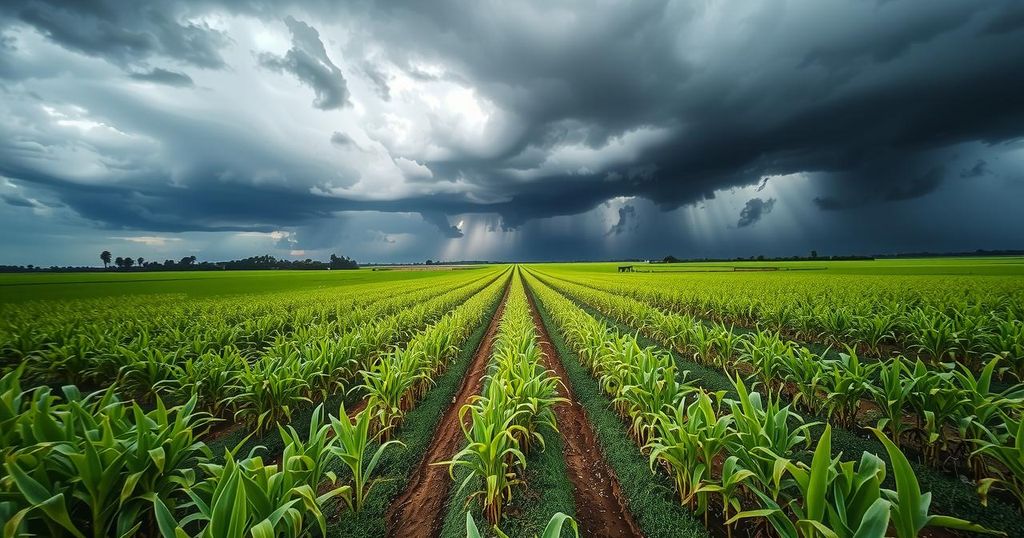Market Dynamics of Sugar Prices: Impact of Weather and Economic Conditions
Sugar prices have fallen due to forecasts of rain in Brazil and a weakening Brazilian real, which has encouraged exports. Key market shifts include revised production estimates in India and Brazil, tightening global sugar supply, and conflicting projections for future production levels. Overall, the market is anticipated to face a tighter supply scenario in the coming months.
Sugar prices have declined, with May NY world sugar 11 down 0.79% and May London ICE white sugar 5 down 0.35%. This drop has been attributed to expected rainfall in Brazil’s sugar-growing regions and a weakening Brazilian real, which encourages export activity by sugar producers.
Meteorologist Climatempo forecasts that widespread showers will occur in Brazil’s sugar regions, alleviating concerns over drought. The Brazilian real’s depreciation has contributed to lower sugar prices by promoting increased exports, as observed in the market dynamics.
Earlier this month, sugar prices reached one-month highs, primarily due to indications of decreased global sugar production. The Indian Sugar and Bio-energy Manufacturers Association revised its 2024/25 production forecast to 26.4 million metric tons, a reduction from earlier estimates. Additionally, Brazil’s sugar output through mid-March fell by 5.3% year-on-year, impacting global supply.
The International Sugar Organization (ISO) recently updated its global sugar deficit forecast for 2024/25 to -4.88 million metric tons, indicating a stricter market scenario compared to previous assessments. Also, the ISO lowered its global sugar production estimate from 179.1 million metric tons to 175.5 million metric tons.
Countering these bearish conditions, some analysts predict an increase in Brazilian sugar production in 2025/26, projecting a rise of 6% year on year. Furthermore, projections from Green Pool Commodity Specialists suggest a surplus in the global sugar market for 2025/26, transitioning from earlier deficit forecasts.
The Indian government’s decision to permit 1 million metric tons of sugar exports this season has further influenced market dynamics. Previously, India restricted exports to maximize domestic supply, only exporting 6.1 million metric tons last season, a significant decline from record highs in previous years.
Moreover, Thailand’s sugar production is forecasted to increase by 18% year-on-year in 2024/25. This projected rise suggests consistent growth in their output, impacting the overall sugar market as Thailand is a significant player.
Adverse weather last year significantly damaged Brazil’s sugar crops, with estimates reporting losses of up to 5 million metric tons due to fires. Consequently, Brazil’s official crop forecast has also been revised downward, reflecting concerns about extreme weather conditions affecting sugarcane yields.
The USDA’s bi-annual report projects a slight increase in global sugar production for 2024/25 and an increase in consumption. However, it also anticipates a decline in global ending stocks, aligning with the tightening market dynamics expected in the upcoming season.
The recent decline in sugar prices reflects a variety of contributing factors including favorable weather forecasts in Brazil, a weakened Brazilian real promoting exports, and revised global production figures. While there are varying projections regarding future production levels, overall market dynamics are expected to tighten in light of declining production estimates from key sugar-producing nations such as Brazil and India. The interplay between supply factors and consumption trends presents a complex outlook for the sugar market.
Original Source: www.tradingview.com




Post Comment